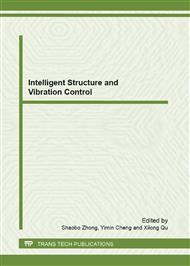[1]
R. Aymar, P. Barabaschi, Y. Shimomura: The ITER design. Plasma Phys. Control. Fusion. Vol. 44(5), pp.519-565 (2002).
DOI: 10.1088/0741-3335/44/5/304
Google Scholar
[2]
F. Troyon, R. Gruber, H. Saurenmann, S. Semenzato, S. Succi: MHD-Limits to Plasma Confinement. Plasma Phys. Control. Fusion. Vol. 26(1A), pp.209-215 (1984).
DOI: 10.1088/0741-3335/26/1a/319
Google Scholar
[3]
D. Pfirsch, H. Tasso: A theorem on MHD-instability of plasmas with resistive walls. Nucl. Fusion. Vol. 11(3), pp.259-260 (1971).
DOI: 10.1088/0029-5515/11/3/007
Google Scholar
[4]
T. H. Jensen, M. S. Chu: A Linear Model for the Tearing Mode of a Tokamak Plasma with Flow and a Resistive Wall Boundary Condition. J. Plasma Phys. Vol. 30, pp.57-63 (1983).
DOI: 10.1017/s0022377800000994
Google Scholar
[5]
C. G. Gimblett: On Free Boundary Instabilities Induced By A Resistive Wall. Nucl. Fusion. Vol. 26, pp.617-625 (1986).
DOI: 10.1088/0029-5515/26/5/006
Google Scholar
[6]
J. P. Freidberg, Ideal Magnetohydrodynamic, New York: Plenum Press, (1987).
Google Scholar
[7]
L. E. Zakharov, S. V. Putvinskii: Effect of plasma rotation in a tokamak on the stabilizing effect of a conducting wall. Sov. J. Plasma Phys. Vol. 13, pp.118-119 (1987).
Google Scholar
[8]
A. Bondeson, D.J. Ward: Stabilization of External Modes in Tokamaks by Resistive Walls and Plasma Rotation. Phys. Rev. Lett. Vol. 72(17), pp.2709-2712 (1994).
DOI: 10.1103/physrevlett.72.2709
Google Scholar
[9]
D. J. Ward, A. Bondeson: Stabilization of ideal modes by resistive walls in tokamaks with plasma rotation and its effect on the beta limit. Phys. Plasmas Vol. 2(1), pp.1570-1580 (1995).
DOI: 10.1063/1.871307
Google Scholar
[10]
R. Betti, J. P. Freidberg: Stability Analysis of Resistive Wall Kink Modes in Rotating Plasma. Phys. Rev. Lett. Vol. 74(15), pp.2949-2952 (1995).
DOI: 10.1103/physrevlett.74.2949
Google Scholar
[11]
J. A. Wesson: Magnetohydrodynamic flow instability in the presence of resistive wall. Phys. Plasmas Vol. 5(11), pp.3816-3819 (1998).
DOI: 10.1063/1.873100
Google Scholar
[12]
B. M. Veeresha, S. N. Bhattacharyya, K. Avinash: Flow driven resistive wall instability. Phys. Plasmas Vol. 6(12), pp.4479-4486 (1999).
DOI: 10.1063/1.873735
Google Scholar
[13]
S. Y. Cui, X. G. Wang, Y. Liu, and B. Yu: Numerical studies for the linear growth of resistive wall modes generated by plasma flows in a slab model. Phys. Plasmas. Vol. 13, pp.094506-094510 (2006).
DOI: 10.1063/1.2356696
Google Scholar
[14]
C. N. Lashmore-Davies: The resistive wall instability and critical flow velocity. Phys. Plasmas. Vol. 8(1), pp.151-157 (2001).
DOI: 10.1063/1.1324657
Google Scholar


